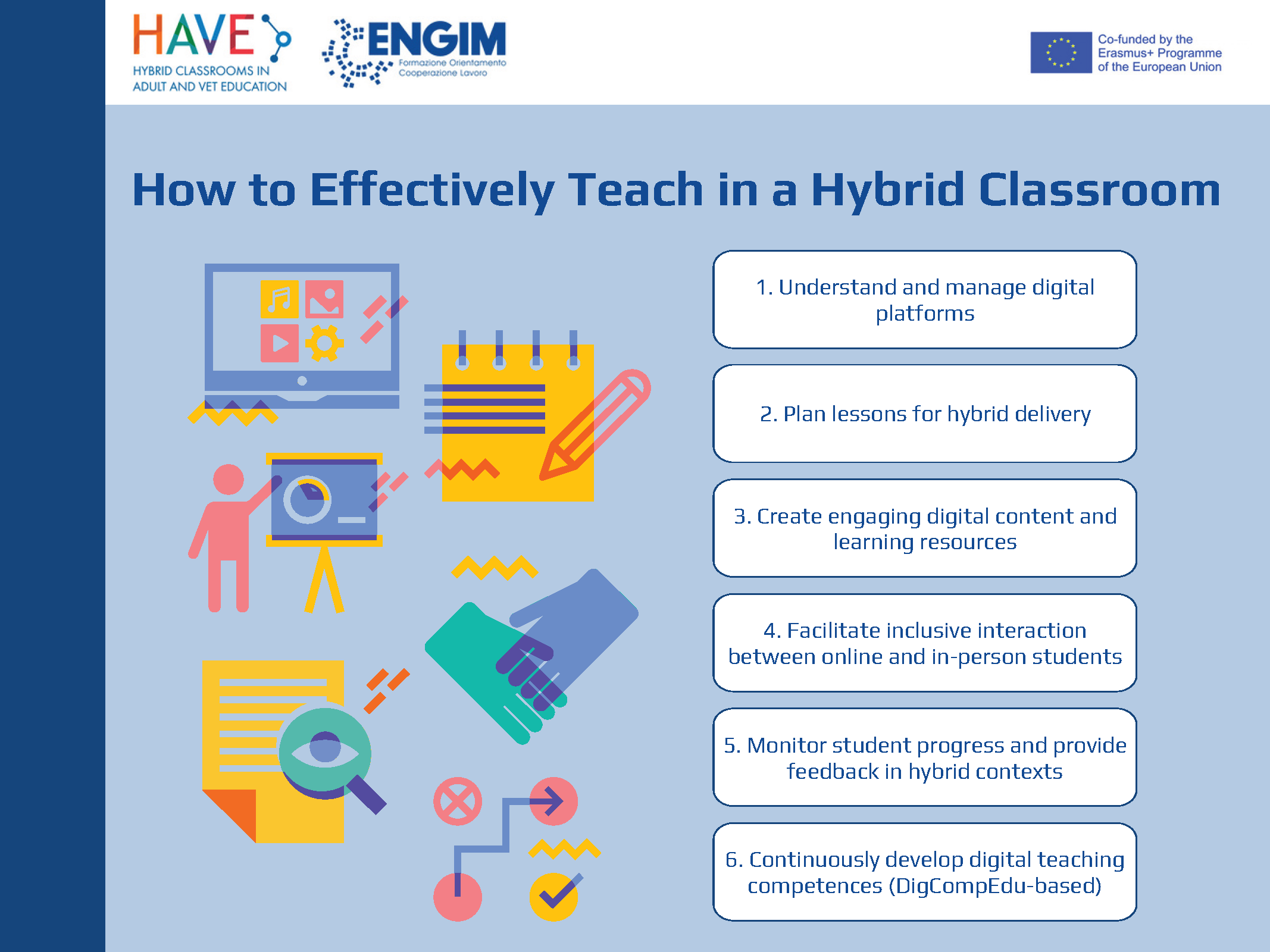How to effectively teach in a hybrid classroom ENGIM
Skills and competences, Evidence of learning, Feedback, Action pansUnderstanding and Managing Digital Platforms
Teachers need to be proficient in using various digital platforms to facilitate hybrid learning. This includes knowing how to navigate and utilize tools like video conferencing software, learning management systems, and digital collaboration tools.
Planning Lessons for Hybrid Delivery
Effective lesson planning for hybrid classrooms involves designing activities that can engage both online and in-person students. This requires a thoughtful approach to ensure that all students can participate and benefit from the lessons, regardless of their physical location.
Creating Engaging Digital Content and Learning Resources
Teachers should develop digital content that is interactive and engaging. This includes creating videos, interactive quizzes, and other multimedia resources that can capture students’ attention and enhance their learning experience.
Facilitating Inclusive Interaction Between Online and In-Person Students
One of the challenges of hybrid teaching is ensuring that online students feel as included as those in the physical classroom. Teachers need to foster an environment where all students can interact, collaborate, and feel part of the class community.
Monitoring Student Progress and Providing Feedback in Hybrid Contexts
Teachers must be adept at tracking student progress and providing timely feedback in a hybrid setting. This involves using digital tools to monitor assignments, participation, and understanding, and offering constructive feedback to support student growth.
Continuously Developing Digital Teaching Competences
Ongoing professional development is crucial for teachers in hybrid classrooms. The guidelines suggest that teachers should continuously enhance their digital teaching skills, based on frameworks like DigCompEdu, to stay updated with the latest educational technologies and methodologies.

